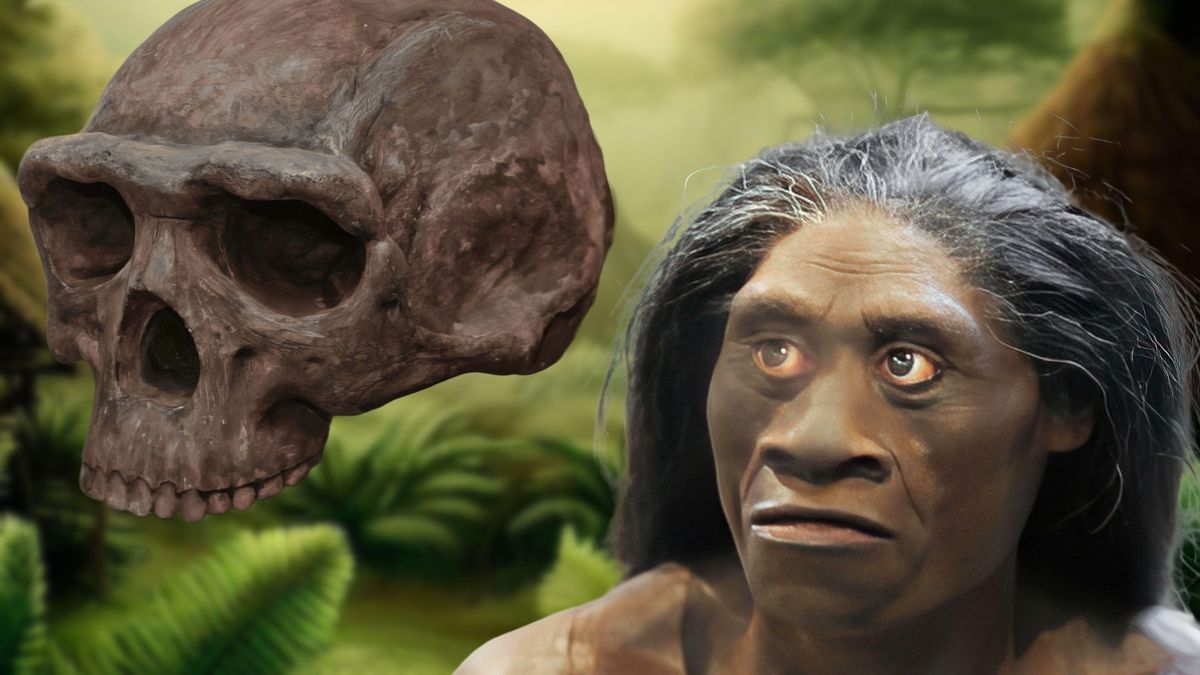
Homo floresiensis, often called the "Hobbit," is a fascinating species of tiny humans that once lived on the Indonesian island of Flores. These small hominins, standing just about 3.5 feet tall, have intrigued scientists since their discovery in 2003. What makes Homo floresiensis unique? Their small stature, combined with a brain size similar to that of a chimpanzee, challenges our understanding of human evolution. Despite their small brains, they made and used stone tools, suggesting advanced cognitive abilities. Theories about their origins range from island dwarfism to being a distinct species that evolved separately from Homo erectus. Dive into these 41 facts to learn more about these mysterious ancient humans and their place in our evolutionary history.
Key Takeaways:
- Homo floresiensis, also known as the "Hobbit," were tiny ancient humans with small brains and unique body proportions. Their discovery challenges assumptions about human evolution and inspires new research worldwide.
- The "Hobbits" of human evolution, Homo floresiensis, lived on the Indonesian island of Flores and used stone tools for hunting. Their extinction remains a mystery, sparking curiosity and inspiring future discoveries.
Homo Floresiensis: The "Hobbit" of Human Evolution
Homo floresiensis, often called the "Hobbit," is one of the most intriguing discoveries in human evolution. These tiny humans have sparked debates and curiosity since their remains were first found. Let's dive into some fascinating facts about this unique species.
-
Discovery Location: Homo floresiensis was discovered on the Indonesian island of Flores in 2003.
-
Nickname: Due to their small stature, they were nicknamed "Hobbits" after the characters in J.R.R. Tolkien's novels.
-
Height: These ancient humans stood about 3.5 feet tall, roughly the size of a modern 3-year-old child.
-
Brain Size: Despite their small size, their brains were even smaller, about one-third the size of modern human brains.
-
Age of Remains: The remains date back to between 100,000 and 60,000 years ago.
Physical Characteristics and Lifestyle
Understanding the physical traits and lifestyle of Homo floresiensis helps paint a picture of how they lived and survived.
-
Body Proportions: They had long arms and short legs, giving them a unique body shape compared to other human species.
-
Tools: Evidence shows they used stone tools, similar to those used by early modern humans.
-
Diet: Their diet likely included a variety of plants and animals, including small elephants and giant rats.
-
Fire Use: There is evidence suggesting they used fire for cooking and warmth.
-
Hunting Skills: They were skilled hunters, capable of taking down large prey despite their small size.
Evolutionary Significance
Homo floresiensis provides crucial insights into human evolution and the diversity of our ancient relatives.
-
Evolutionary Branch: They are believed to have branched off from the human evolutionary tree over a million years ago.
-
Island Dwarfism: Their small size is thought to be a result of island dwarfism, a process where species evolve smaller sizes due to limited resources.
-
Distinct Species: Genetic studies suggest they were a distinct species, not just small modern humans.
-
Anatomical Differences: They had unique anatomical features, such as a different wrist structure, distinguishing them from modern humans.
-
Brain Structure: Despite their small brain size, the structure was complex, indicating advanced cognitive abilities.
Cultural and Scientific Impact
The discovery of Homo floresiensis has had a significant impact on both culture and science.
-
Media Attention: The discovery captured global media attention, sparking interest in human evolution.
-
Scientific Debates: Their classification has been a topic of debate among scientists, with some initially skeptical about their distinct species status.
-
Exhibitions: Museums worldwide have featured exhibits on Homo floresiensis, educating the public about this unique species.
-
Research Funding: The discovery has led to increased funding for archaeological research in Southeast Asia.
-
Public Fascination: The "Hobbit" nickname has made them a popular subject in books, documentaries, and articles.
Ongoing Research and Discoveries
Research on Homo floresiensis continues, revealing new information and raising more questions.
-
New Sites: Ongoing excavations on Flores and nearby islands may uncover more remains and artifacts.
-
DNA Analysis: Efforts to extract DNA from the remains could provide more insights into their genetic makeup and relationship to other human species.
-
Comparative Studies: Comparing Homo floresiensis with other ancient humans helps scientists understand the diversity of our evolutionary past.
-
Technological Advances: Advances in technology, such as 3D scanning and imaging, allow for more detailed studies of their anatomy.
-
Interdisciplinary Research: Collaboration between archaeologists, anthropologists, and geneticists is crucial for piecing together the story of Homo floresiensis.
The Mystery of Their Extinction
The reasons behind the extinction of Homo floresiensis remain a mystery, with several theories proposed by scientists.
-
Volcanic Eruption: One theory suggests a volcanic eruption on Flores around 50,000 years ago may have contributed to their extinction.
-
Climate Change: Changes in climate and environment could have affected their food sources and habitat.
-
Competition with Modern Humans: The arrival of modern humans in the region might have led to competition for resources, contributing to their decline.
-
Disease: Introduction of new diseases by modern humans could have impacted their population.
-
Combination of Factors: It's likely that a combination of factors, rather than a single event, led to their extinction.
Legacy and Importance
Despite their extinction, Homo floresiensis has left a lasting legacy in the field of human evolution.
-
Challenging Assumptions: Their discovery challenges assumptions about the linear progression of human evolution.
-
Human Diversity: They highlight the diversity and adaptability of ancient human species.
-
Evolutionary Puzzle: Homo floresiensis adds another piece to the complex puzzle of human evolution.
-
Inspiration for Research: Their discovery has inspired new research and exploration in other parts of the world.
-
Educational Value: They serve as an important educational tool for teaching about human evolution and archaeology.
Fascinating Facts and Trivia
Here are some additional intriguing facts and trivia about Homo floresiensis.
-
Nickname Origin: The nickname "Hobbit" was coined by the media shortly after their discovery.
-
Cave Dwellers: They lived in caves, which provided shelter and a strategic location for hunting.
-
Unique Feet: Their feet were unusually large for their height, similar to the fictional Hobbits.
-
Cultural Impact: The discovery has influenced popular culture, including references in movies and TV shows.
-
Continued Mystery: Despite extensive research, many aspects of their lives and extinction remain a mystery.
-
Inspiration for Future Discoveries: The story of Homo floresiensis continues to inspire scientists and explorers to search for other unknown human species.
The Little People of Flores
Homo floresiensis, often called the "Hobbit," has captured imaginations since its discovery. These tiny humans, standing just over three feet tall, lived on the Indonesian island of Flores around 50,000 years ago. Their small stature and unique features have sparked debates about human evolution and adaptation. Despite their size, they crafted tools, hunted, and possibly even used fire.
Their discovery challenges our understanding of human diversity and evolution. It shows that human history is more complex than previously thought. As scientists continue to study these fascinating remains, we learn more about our ancient relatives and the environments they thrived in.
Homo floresiensis reminds us that the story of human evolution is full of surprises. Each new discovery adds another piece to the puzzle, helping us understand where we come from and how we’ve evolved over millennia.
Frequently Asked Questions
Was this page helpful?
Our commitment to delivering trustworthy and engaging content is at the heart of what we do. Each fact on our site is contributed by real users like you, bringing a wealth of diverse insights and information. To ensure the highest standards of accuracy and reliability, our dedicated editors meticulously review each submission. This process guarantees that the facts we share are not only fascinating but also credible. Trust in our commitment to quality and authenticity as you explore and learn with us.


